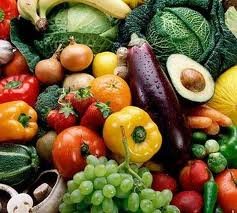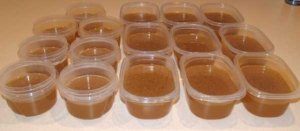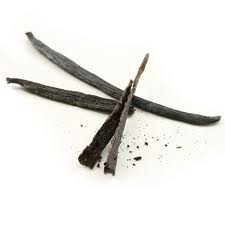Tracy Goodbrand and Steeldust

Blog |
||
Unprocessing Your Food How to make processed or convenience foods at home, without all the chemicals & additives that are affecting our health. |
 |
|
| The following blog entries are in order of the most recent at the top. I hope you enjoy reading about my journey of 'unprocessing my food'. Click on the Recipes submenu tab to get the recipes. Click on the
Additives submenu tab to read about the various additives and chemicals found in processed food, plus their known affect on our health.
|
|||||||||||||||||||
|
Maple Roasted Butternut Squash Soup I made this soup to enjoy during the Christmas holidays and I had so many people rave about it that I thought I should share the recipe. It is certainly a perfect soup for this chilly winter days! This recipe makes a lot and it freezes really well too. Make a batch and enjoy when you are in the mood. When I serve it, I like to add a dollop of sour cream on the top for some extra richness! Enjoy!
|
January 21, 2013 | ||||||||||||||||||
Stock With it being so chilly right now, I feel that soup season is upon us. I thought I would start off with how to make stock (chicken stock is the most common). There is nothing better than home-made stock in the freezer ready for the time when you want to make a warm and hearty soup, or just need the stock base to add to another recipe. 
In preparation of making soup stock, there a few things you can do ahead of time. The first thing is save all bones. For example, after I roast a chicken, I strip all the meat off the carcass (if there is any left) and freeze the bones. The same can be done with beef bones and fish. With fish, I use the tails from shirmp, claw shells, lobster shells, mussel shells, etc. I also freeze various vegetables. A good example of this is the woody ends that you have snapped off of asparagus. Another good one is broccoli stems. Those little stalks of celery that you don't have a use for and the green ends of leeks are other good examples. I freeze both bones and vegetables as a habit all year so I have the fixings to make stock anytime I need to.
Of course, you can buy the tetra packs of stock to use or bouillon cubes, but I found a few health issues with these: Cost Comparison: It might take a bit of time to make your own stock, but as you can see by the price comparison (I based it on chicken stock as that is the most common used), you can save yourself over 300%. That is a HUGE savings plus no chemicals and probably better tasting too. How can you lose?
Click here for the recipe. (will open in a separate window) I hope you enjoy making your own stock!
|
December 27, 2012 | ||||||||||||||||||
Vanilla This journey of "unprocessing your food" actually began with finding out we could make our own vanilla extract. That was 3 years ago and we are presently on our 4th bottle of home-made vanilla extract. So many baking recipes require vanilla. Oh sure, you can buy the cheap vanilla extract, and you get exactly what you paid for - a cheap tasting product. Have you ever tried the real thing? It is more expensive, but the difference in taste makes it so worthwhile! It is the expense of the real vanilla extract that is tough to swallow. Sure, the taste is worth it, but it is hard on the wallet.
The downfall to making your own vanilla extract is the time for the vanilla beans to infuse their flavor, about 4 to 6 months. Oh, the taste is so worth the wait! I started the second bottle when I was 1/3 of the way through the first bottle so I wouldn't run out. Cost Comparison With the price of the Real Vanilla Extract being so high, it is certainly worth making your own vanilla extract. Home-made Vanilla Extract will cost you ½ of what it costs in the store. Plus, you only have to make exactly what you need. There is no more wondering how long that bottle has been in the fridge and is it still safe to use? There will be no more waste and you will be a lot healthier!
Click here for the recipe. (will open in a separate window)
Here lies the problem with Artificial Vanilla Extract. It contains the additive Sodium Benzoate. Definitely an additive that you don't want to be ingesting. Health Issues
Here are some sources: http://handblender.us/sodium-benzoate-side-effects Feel free to explore some more on the health problems associated with these additive.
|
September 18, 2012
|
||||||||||||||||||
The Beginning of the Journey We have been on a journey the past few years with making food at home that are processed foods found in the stores. We discovered that these processed foods contained additives, chemicals, and preservatives that were affecting our health, most particular our digestive and intestinal health. Knowing that these non-natural ingredients in processed foods were causing us issues in the lower gut in particular, we asked ourselves, "what other problems are they causing?" Could these additives, preservatives, and chemicals be causing any long term health problems? Could they lead to something WAY more serious? At the very least, we know that our bodies are just not made to digest and deal with chemicals, so it can’t be doing our bodies any good.... As we discovered a processed food that caused us problems, we started looking if there was a way to make this same food at home. And so far, every one of these foods can be made at home! I can’t believe how easy it is to make these foods and affordable too. Foods like salad dressings, cream cheese, and sweet Thai chilli sauce for example. Did you know that you can corn your own beef? Even the time commitment to make these foods at home is very little, usually just a few minutes. That is certainly worth considering! We know someone who has constant intestinal issues and we believe that the damage has been done over the years from the chemicals in processed foods. For her, it is probably too late. We hope it isn’t too late for us, nor for any of you. Join us on our journey of discovering how to make these "convenience" foods at home. We’ll share what processed foods have caused us grief; what additives, chemicals or preservatives are in them; our research on what these non-natural ingredients can cause; and recipes on how to make these same foods at home. We hope you’ll share your recipes too.
|
September 18, 2012 (Posted Originally on September 21, 2011) |
||||||||||||||||||
Brought my Blog Home I started my first Blog in 2011 at blogspot.ca (http://un-processingyourfood.blogspot.ca/) which has a number of advantages, but I did find myself very frustrated with getting the look and layout exactly how I wanted it. I even worked directly in the HTML and was still frustrated. It actually turned me off adding new posts to my blog for a long time. I did find, though, that I was constantly talking to people about 'unprocessing your food' and wanting to share what I have learned. So, I decided to move my Blog to my own web site. I hope you enjoy my Blog and find some recipes that will make a differrence in your life. If there is ever a recipe you are interested in but can not find it here, please feel free to contact me - I would be happy to share!
|
September 18, 2012 | ||||||||||||||||||
Welcome to Un-processing Your Food!
| I have found over the past few years that all the chemicals and non-natural additives in processed foods are causing health issues for my husband and myself. This has led to learning if these same processed and convenience foods can be made at home. I discovered that so many can be made at home, are actually very easy to make, and also cost effective. I decided to share what we have learned with anyone who is interested, perhaps making a healthy difference to their lives too. |
Our goal is to create awareness of the health problems caused by processed foods and providing recipes to make these same foods at home.
We have discovered that 'un-processing your food' is actually quite easy - easier than you ever thought, and with the added bonus of saving you money too.
All of the recipes have been tested in our own kitchen so be assured that they are as tasty as they are easy to make.
All feedback is always welcome, including your own experiences and recipes. Click here to email me.

